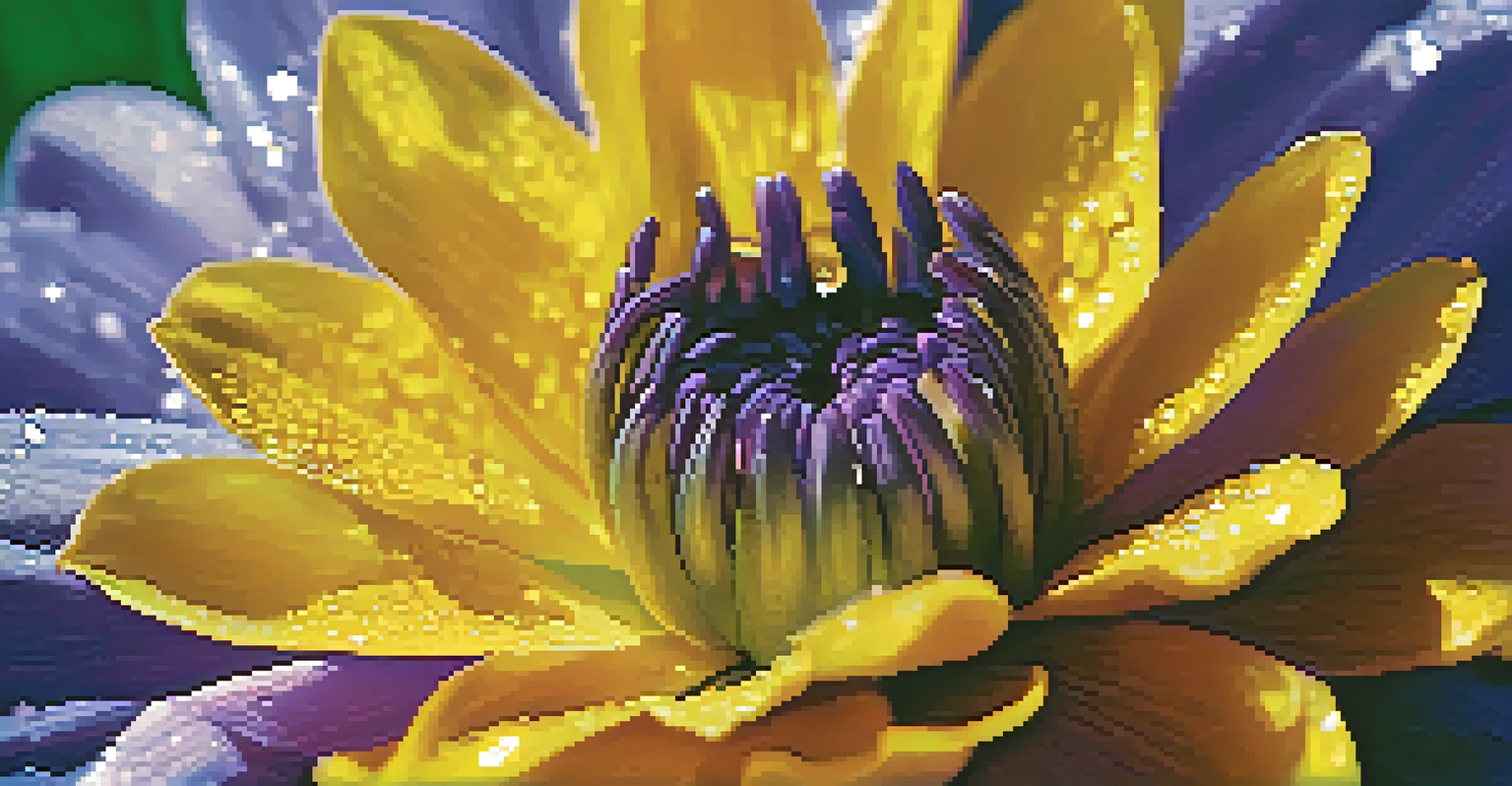Understanding Aesthetics: The Basis of Art Interpretation

What Are Aesthetics in Art and Why They Matter
Aesthetics refers to the study of beauty and taste, deeply woven into the fabric of art. It helps us understand why certain pieces resonate with us on a personal level, evoking emotions and thoughts. When we appreciate art, we're engaging with aesthetics, interpreting the artist's intent and the feelings they wished to convey.
Art enables us to find ourselves and lose ourselves at the same time.
Think of aesthetics as the lens through which we view art; it shapes our perceptions and influences our preferences. Just as different styles of music can evoke different feelings, various artistic elements—like color, form, and texture—can trigger unique emotional responses. Recognizing these elements enhances our appreciation and understanding of a piece.
Related Resource
Ultimately, aesthetics isn’t just about what looks good; it's about the deeper connections we forge with art. It invites us to explore our values, beliefs, and experiences, making art interpretation a personal journey. As we delve into aesthetics, we unlock the door to appreciating art more profoundly.
Historical Context: Aesthetics Through the Ages
The concept of aesthetics has evolved significantly over time, influenced by cultural and philosophical movements. In ancient Greece, philosophers like Plato and Aristotle emphasized the importance of beauty in art, linking it to truth and morality. This foundational perspective paved the way for later thinkers, who would further explore how aesthetics interacts with society.

During the Renaissance, the revival of classical ideas led to a renewed interest in beauty, proportion, and harmony in art. Artists like Leonardo da Vinci sought to create works that embodied these principles, resulting in masterpieces that continue to inspire. The evolution of aesthetics reflects societal values, making it essential for understanding art within its historical context.
Aesthetics Shape Art Interpretation
Aesthetics helps us understand the emotional and personal connections we have with art.
As we move into the modern era, various movements—such as Impressionism and Abstract Expressionism—challenged traditional notions of beauty. Artists began to express their subjective experiences rather than adhere to conventional standards. This shift invites us to reconsider what we deem aesthetically pleasing and encourages a broader interpretation of art.
The Role of Emotion in Aesthetic Experience
Emotions play a crucial role in how we experience and interpret art. When we encounter a powerful painting or a stirring piece of music, our feelings often guide our understanding and appreciation. This emotional connection can transform a simple viewing into a profound experience, allowing us to relate personally to the artwork.
The beauty of art is that it can be anything you want it to be, a reflection of your own journey and experiences.
For instance, consider how a vibrant landscape might evoke feelings of joy or nostalgia, while a somber portrait could stir sadness or contemplation. These responses are influenced by our individual experiences and memories, highlighting the subjective nature of aesthetics. Understanding this relationship helps us appreciate the diverse interpretations that art can inspire.
Related Resource
Moreover, artists often aim to elicit specific emotions through their work, using color, composition, and subject matter strategically. By tapping into our emotions, they can create a shared experience that resonates across different audiences. This interplay between emotion and aesthetics enriches our engagement with art and fosters a deeper understanding of its impact.
Cultural Influences on Aesthetic Preferences
Cultural background significantly shapes our aesthetic preferences and interpretations of art. Each culture has its unique set of values, beliefs, and historical experiences that influence what is considered beautiful or meaningful. As a result, art from different cultures can evoke varying responses, reflecting the diversity of human experience.
For example, while Western art often emphasizes individualism and realism, many Eastern traditions might focus on harmony and abstraction. This divergence illustrates how cultural context informs our understanding of aesthetics, impacting everything from artistic techniques to thematic choices. Being aware of these influences enhances our appreciation for global art forms.
Cultural Context Influences Beauty
Cultural backgrounds shape our aesthetic preferences, reflecting diverse interpretations of art.
As we engage with art from different cultures, we can broaden our perspective and challenge our preconceived notions of beauty. This exploration fosters a more inclusive appreciation of art, revealing the rich tapestry of human creativity. By understanding the cultural underpinnings of aesthetics, we can cultivate a deeper respect for the art that surrounds us.
The Intersection of Aesthetics and Philosophy
Philosophical inquiries into aesthetics delve into the nature of beauty and artistic expression. Philosophers like Immanuel Kant proposed that beauty is not merely a subjective experience but has universal qualities that can be appreciated by all. This tension between subjectivity and universality continues to shape our understanding of aesthetics today.
Additionally, philosophy challenges us to consider the ethical implications of art. Questions arise about the responsibilities of artists in conveying messages through their work and how these messages influence societal values. By engaging with these philosophical perspectives, we can deepen our understanding of the role art plays in shaping culture and thought.
Related Resource
Ultimately, the intersection of aesthetics and philosophy encourages us to reflect on our beliefs about art and beauty. It invites us to explore not only what we find beautiful but also why we find it so. This critical reflection can enrich our engagement with art and enhance our interpretation of its meaning.
Personal Experience: Shaping Aesthetic Appreciation
Our personal experiences significantly shape our aesthetic appreciation. From childhood memories of visiting art galleries to the emotions evoked by a song, these moments contribute to our unique relationship with art. Understanding this connection allows us to embrace our individual interpretations while recognizing the shared nature of aesthetic experiences.
Consider how a specific painting might remind you of a cherished memory or a significant life event. This personal connection can heighten your appreciation for the artwork, making it resonate on a deeper level. By acknowledging our experiences, we can cultivate a richer understanding of how aesthetics impact our lives.
Digital Age Redefines Aesthetics
The rise of digital art and social media is transforming how we engage with and interpret aesthetics.
Furthermore, sharing our interpretations with others can foster meaningful conversations about art. Engaging in discussions about our personal connections can reveal the diverse ways people experience aesthetics. This exchange of ideas not only enhances our understanding but also deepens our appreciation for the myriad interpretations art can inspire.
The Future of Aesthetics in a Digital Age
As we navigate the digital age, the concept of aesthetics is evolving rapidly. With the rise of digital art and social media, artists have new platforms to explore and express their creativity. This shift opens up exciting possibilities for how we understand and interpret aesthetics in contemporary art.
Digital tools allow artists to experiment with forms and techniques that were previously unimaginable. From virtual reality installations to interactive art, the boundaries of aesthetics are being pushed. As viewers, we are invited to engage with art in dynamic ways, transforming our experience and interpretation of artistic expression.

Moreover, the global accessibility of art through digital platforms encourages diverse aesthetic experiences. We can now explore art from different cultures and backgrounds at the click of a button, enriching our understanding and appreciation. As we embrace these changes, the future of aesthetics promises to be as vibrant and multifaceted as the art itself.